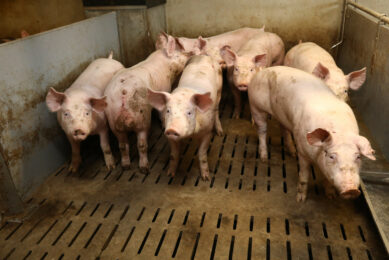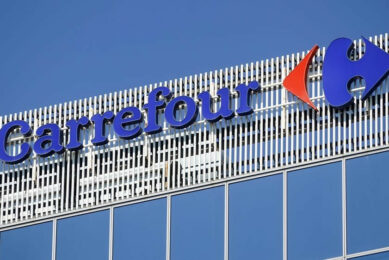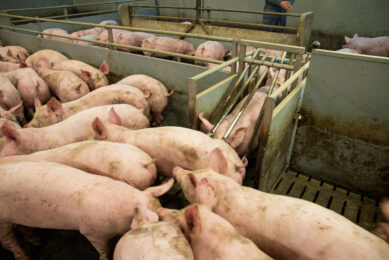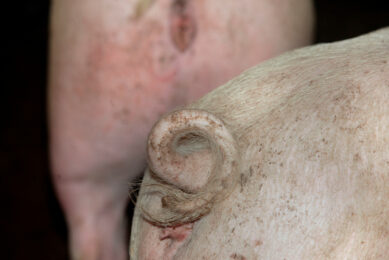A good start begins long before farrowing
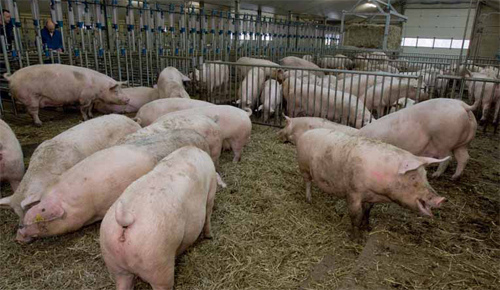
As much as lactation, gestation also marks an essential phase in the sow production cycle. With growing litters, it becomes more important to be able to wonder whether existing sow feeding programmes still suffice. Research including monitoring and controlling sow body conditions indicate that novel feeding strategies may soon be here.
Selection on the basis of growth rate and carcass quality, to meet consumer demand, has led to the production of increasingly thin and muscular sows. At the same time, sows have also become hyperprolific, which changed the characteristics of piglets at farrowing.
As is well-known and described by many authors, there has been a decrease in the survival rate of piglets in relation to an increase in litter heterogeneity and the appearance of a phenomenon called intra-uterine growth retardation (IUGR) in piglets. Almost 75% of runt piglets have been affected by this phenomenon, which is characterised by a difference in development and growth rate between the abdomen and head. Asymmetric growth retardation seems to be partially linked to a nutritional deficiency towards the end of gestation. Just to avoid confusion – this phenomenon is not to be confused with a lack of symmetrical growth (the other 25%), which is linked to a nutritional deficit at an early stage of gestation. This is related to under-nutrition of the mother or to the utero-placental unit.
Growth retardation
Piglets affected by growth retardation can account for up to 20% of a litter and as such constitute both a technical and economic challenge. In this article, it is therefore estimated that piglets with low birth weights represent 20% of total losses in maternity.
Piglets with IUGR have been shown to have anatomical and physiological characteristics which differ from those of a normal weight. This includes a relatively stronger expression of genes that code for certain enzymes. In addition, what can be seen is a reduction in the exchange surface areas in the intestine.Malnutrition in uterocan have long term consequences too. It can modify the number of muscle fibres and alter the potential deposition of an animal’s muscle mass. It can also lessen resistance to certain pathogens and alter the immune system. Last but not least, it can develop metabolic disorders such as insulin resistance.
As part of the definition of a gestating sow’s needs, new approaches and techniques are emerging. This can be easily illustrated by the recent work of scientists Moehn and Levesque, published in 2011, into the threonine requirements of sows between the beginning and end of gestation. This indicated that the idea of an ‘average’ ideal protein during gestation is not sufficient to meet the requirements of performance optimisation: It would be preferable to dynamically define needs (ideal protein dynamics in this case).
Data exist on the relationship between the body reserve dynamics during lactation and reproductive performance, supporting a dynamic approach to sow nutrition. There are, however, few data available on the subject of the relation between body reserve dynamics during gestation and sow reproductive performance.For the trials described in this article, the CCPA research team followed the dynamic evolution of the physical reserves of fat and muscle by taking individual measurements of the back-fat thickness (BT) and longissimus dorsi muscle depth (MD) on the P2 site with the help of an Agroscan ultrasound from the moment of insemination, and at 28, 84 and 112 days of gestation.The objective of taking these measurements is to relate the body reserve dynamics during gestation to the performance of the piglets at birth and their survival for the first 48 hours of their lives. Special attention is given to the number of IUGR piglets.
The swine team retained the piglets that were affected by IUGR, whose birth weight was less than 80% of the litter’s average weight. The sows were fed with a single gestational diet (9.2 MJ net energy, 5.2 g of digestible lysine) with a U-curve feeding plan – providing relatively more gestation feed in the beginning and the end of gestation. Individual measurements were taken from 235 sows, crossbreds Large White x Landrace.
Influence on litter size and parity
An increase in litter size induced an increase in the number of IUGR piglets. Each additional piglet in a litter resulted in a reduction in individual birth weight of 41 g, in line with previously published data.
An IUGR piglet had an average birth weight of 940 g: This category of piglets represented 16.8% of the total of 5,734 piglets. It is essential that we do not confuse this kind of piglet with the extreme underweight piglets whose birth weight is less than 800 g and whose mortality rate reaches 66% within the first 48 hours of life. The impact of litter size and its parity are a major factor on the number of IUGR piglets. No matter what ranking a litter had, when the size of the litter increased by one additional piglet the number of IUGR piglets increased by 0.28.
This phenomenon was accentuated at parity 5 sows or even more; they had 0.5 more IUGR piglets than sows from parity 2 to 4, regardless of the total number of births.The survival rate of IUGR piglets was only 54%, in comparison to the average rate of survival of 88% for normal piglets, which supported the economic interests in controlling the number of IUGR piglets on farms. At the end of gestation, sows that lost their body reserves (BT and/or MD) were the most prolific. To overcome the effects of litter size and parity, the researchers applied as a co-variable the litter size (total born) and as a fixed factor for the litter’s rating. The study permitted us to identify other explanatory factors for the variability in the number of IUGR piglets.The variables that explained the number of IUGR piglets are all linked to the sows’ body reserve dynamics during gestation. Therefore, sows with the most IUGR piglets:
• were hyper-muscled at 84 days of gestation.
• had lost fat during the first third of gestation.
• had gained less weight and fat over the total gestation period.
In the last third of gestation, the mobilisation of muscle (loss of MD) appeared to be a risk factor in the appearance of IUGR piglets in the litter.
Conclusions and perspectives
Each additional piglet born in our study contributed to an increase of 0.28 IUGR piglets, with a survival rate of only 54%. We can therefore estimate that in France the stillbirths linked to IUGR is more than 0.55 piglets per litter. The number of IUGR piglets can be reduced by monitoring and controlling the sow body reserve dynamics during gestation, especially towards the last third of gestation. A nutritional approach differentiated by gestational period, through a bi-phase or multi-phase feeding programme that allows especially the monitoring of muscle depth during the last third of gestation is a potential lever for improvements in sow performance and piglet survival at birth.
New data indicate that macronutrients (digestible amino acids, net energy, digestible phosphorus) are probably not the only factors affected by the dynamic gestational recommendations.
For example, health scientist Carolina Berchieri-Ronchi showed last year that while a feeding plan is consistent (2.5 kg of feed per day in the total gestation period) the end of gestation can be characterised by an increase in sows suffering from oxidative stress. In the case of humans, however, this presence of oxidative stress during pregnancy is thought to be a risk factor for IUGR in newborn babies.The first attempt (CCPA-Deltavit laboratory) at hyperprolific rearing (a total average of 15.4 piglets born) seemed to indicate that the phenomena of oxidative stress at the end of gestation is not yet a reality on commercial farms when the sows are part of a U-curve feeding programme during gestation with sufficient supplies. The vision of the research team, however, is that nutrition will become physiological, dynamic, and formulation criteria will probably evolve from ‘nutritional’ to ‘functional’.
This new approach to body reserves has practical repercussions for our farms and more specifically for our technicians and breeders. In order to be able to optimise production performance and the longevity of the sows, it is no longer sufficient to recommend the entry of a sow with certain levels of fat reserves and muscle into maternity. We also need to recommend an optimum dynamic gain in fat and muscle between the start and end of gestation. PP



